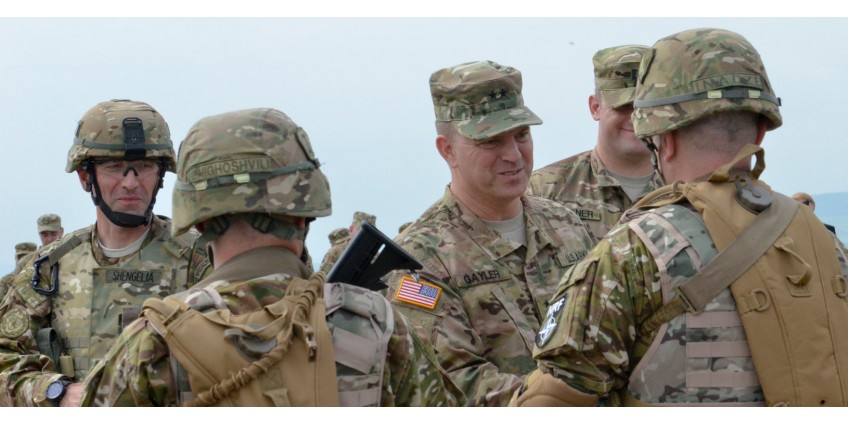
This product is not exportable outside the United States.
By adding this item to cart, you agree and acknowledge the Export Policy and confirm that you are a person in the United States with no intentions to illegally export the device.
This product is not exportable outside the United States.
By adding this item to cart, you agree and acknowledge the Export Policy and confirm that you are a person in the United States with no intentions to illegally export the device.


0

0


"War ... War never changes." This phrase is familiar to everyone who has played Fallout at least once. Moreover, her superficial wisdom and seeming philosophical ponderousness made her one of the most recognizable modern idiomatic expressions that have firmly entered the contemporary culture. Often, we do not even hesitate to repeat this statement or similar phrases, admiring the fatalism and depth hidden in them.
But if we reject this statement's obvious poetic and humanitarian meaning, we may be greatly surprised at how far these words are from the truth. War, in all its horror and inevitable pain, is changing. Especially in recent decades. It is changing, absorbing the latest developments and discoveries of scientists, allowing to create new and even more effective methods of destruction. The results of this process can be easily seen even by briefly studying the history of the twentieth century.
It would be erroneous to say that modern science and technology have only one goal - to create a deadly weapon. You need to understand that this is a non-stop race in which attacking methods generate counter defense methods by their appearance. In the last part of our talk about the development of soldiers' equipment, you can see this development in dynamics. The encouraging fact is that the methods of protection and ways of reducing the number of injuries and fatal injuries in the army are still ahead of new ideas of assassination. Everything speaks about it: history, statistics, and development forecasts.
This trend still supports the fragile hope that we can arrive at a world without war. Trends and experiences are critical components of this process. Therefore, it is vital to delve deeper into the topic and see the situation in great detail.
In the last article, we examined the history and development vectors of soldiers' equipment. Today we will pay attention to the specific details of this outfit. After all, there can be no trifles in this topic, as with any issue on which the life of a soldier depends, defending the sovereignty of his homeland and the safety of his fellow citizens.
Modern war has long since lost a touch of its former romanticism. The fight turned into a precise and well-defined action. Today there is no splendor of cavalry uniforms, the courage of saber battles, desperate frontal attacks, and infantry exploits. The place of a person is often located at the operator's desk of unmanned strike drones.
A successful operation today does not involve ground forces and people on the battlefield. An optimal modern combat operation includes many modern technologies and a minimum of people on the battlefield. As the latest practice shows, the process begins with a verified attack by unmanned strike equipment. After that, helicopters rise into the sky, which completes the attack. After that, most often, you can announce the successful completion of the mission. A future war puts the lives of soldiers at the top of the list of priorities. Therefore, the presence of infantry on the battlefield is unnecessary. And, even if the infantry is at the epicenter of events, it should be invisible.
Stealth saves lives. Troops must be invisible in the field and the forest, urban combat, buildings, water, and air. The enemy should not see the fighter, but the allies will see him. Even if not visually, they will be able to recognize them using identification. Therefore, stealth is perhaps the most critical piece of equipment. Proper camouflage can save lives even before the enemy fires a shot with body armor and a helmet. In war, clothing is the "second skin" that will come first to the rescue in a dangerous situation.
What has long been perceived by us as a simple element of the coloring of military clothing has a long and deep history. Every dash and every smear on the camouflage is not accidental. And now we will tell you why.

You probably remember the funny outfits of the Royal British troops. These festive red outfits with white cross-hairs on the chest indicated where to shoot or hit with a bayonet. And, funny triangular hats completed the grotesque picture of a soldier of the armada "Her Majesty." We will not dwell on this image. It is perfectly familiar to you from hundreds of films and history textbooks. Such clothes can be called camouflage only if the battle is taking place at a fair.
The absurdity of this form of clothing for soldiers has become increasingly evident with the development of firearms. Moreover, the improvement of equipment happened even before the change in military doctrine. Please note that both the North and the South are at war with equipment of low-key and dull colors during the Civil War. Both sides continued to march in attacks, trying to keep the formation and becoming easy targets.

The United States has been blessed with an extended lack of need for hostilities. The nation received an effective vaccination against violence after the bloody Civil War. But when the fires of world wars began to flare up in the world, it was difficult for the most powerful state on the planet to remain on the sidelines.

With the beginning of WWII, the need for a radical change in almost all the foundations of military science became apparent. All countries tried to respond to new challenges adequately. The United States was also in their ranks. Sending our sons to the shores of Europe, engulfed in a terrible war, our country tried to provide the following current requirements.
And the current requirements did not provide for camouflage, even though even the navy has uniquely painted ships since the nineteenth century, trying to hide their silhouettes on the horizon. But when it comes to clothing, it was just clothing: comfortable, practical, and cheap. This was a misconception, and this mistake quickly became apparent.
All uniforms of the American troops were of the same color. The color variability was limited to two types - camouflage olive and khaki. After the events on the front of the war with Japan, the P42 Pacific camouflage was added to the army's arsenal.

Helmet covers, capes - this is almost the entire list of applications. The problem is that these specific colors were not used in the mass production of military uniforms. A lot of time remained to understand the vital necessity of the widespread use of such a drawing.
Also, it is worth noting that the lack of due attention to uniforms on the part of the army leadership on the battlefields of Europe had an unexpected result. So, the camouflage of the American army for the forest turned out to be very similar to the similar uniform of the German troops. As you can imagine, the result of such a paradox was often "friendly fire."
The military products themselves, at that time, were excellent and of high quality. For example, capes with the same forest camouflage were two-sided. The reverse side of the cape was designed for use in sandy and desert areas. In addition, the infrastructure responded quickly to military feedback and continually improved products. At the beginning of the military campaign, the uniform for the military was sewn from diagonal twill. The use of this material was justified. It was durable and reliable. But, at the same time, its shortcomings neutralized its advantages in the field. Twill did not dry well and instantly became incredibly heavy when exposed to rain or high humidity. Therefore, the industry quickly reoriented itself and began to produce a uniform from cotton, treated with a unique material that repels water.
Researchers identify this military campaign as a significant milestone in the history of the US Army. This war has genuinely become a time of conclusions and lessons taught by the largest battle in the history of humanity. But, as for camouflage and military uniforms, no significant innovations have appeared. Cotton, impregnated with a water-repellent composition, remained the primary material for producing uniforms for American soldiers. The color of the fabric also remained in two types: khaki and olive.
This set of elements met the requirements of the troops relatively qualitatively, taking into account the geography and conditions of the conflict. In addition, at that time, neglect of the development of military uniforms was characteristic of most armies in the world. Against their background, the US army looked very progressive, not even radically changing its views on the camouflage and equipment of its military.
What was enough during the fighting in Korea was not sufficient in Vietnam. The specific climate, tactics, environment, and conditions required all military technologies' rapid and rapid development because the price in these hostile conditions was too high.
The army received an all-cotton uniform with rip-stop technology. This invention prevented the increase in damage to the mold. That is, if a soldier tore his pants, then the gap did not increase. This was possible due to the fabric's particular "square" structure, formed by a specific thickened thread that reinforced it.

The general army units were dressed in oliv uniforms. At the same time, special units received a specific form based on advanced developments.
For example, Special Forces wore Tigerstripe camouflage patterns. It was a modified version of the uniform of the Vietnamese army and was borrowed for a design that fits perfectly into the landscape of the local jungle. But, this was not an invention of the Vietnamese. They took the drawing from the French and adapted it to the usual color scheme of the jungle. As a result, the development of the ideas of the Vietnamese army turned into a significant advantage for our army.

For example, Special Forces wore Tigerstripe camouflage patterns. It was a modified version of the uniform of the Vietnamese army and was borrowed for a design that fits perfectly into the landscape of the local jungle. But, this was not an invention of the Vietnamese. They took the drawing from the French and adapted it to the usual color scheme of the jungle. As a result, the development of the ideas of the Vietnamese army turned into a significant advantage for our army.
The rip-stop system was so successful that, with minor modifications, it was used in the future. We must give credit to this invention. Thanks to him, the form has become lighter, and its practicality and reliability have increased many times over. A different camouflage was applied to the material of this base, and this story is much more enjoyable.
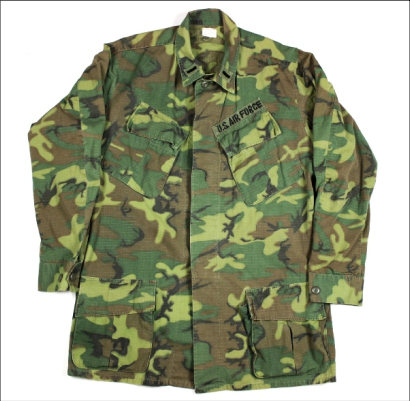
ERDL
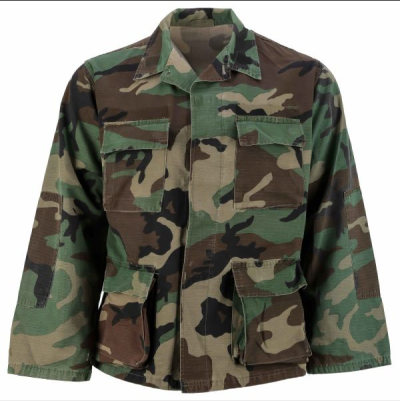
M81 "woodland"
Some in the army command understood how vital the role of camouflage in the war was. Therefore, after WWII, concrete studies were initiated to create a universal resource. Active work began only in 1948. And, in 1968, camouflage colors were adopted, called "ERDL." This drawing is reminiscent of the more modern M81 "woodland". This version has become a worthy replacement for the olive version. Thanks to the blurring of details and a reasonable basis, it reliably hid the soldier in the jungle and forest areas.
This period became almost a critical time when the military industry made the most significant breakthrough in its history. Now no one questioned the paramount importance of camouflage and the army uniforms. The result was the invention of the legendary M81 "Woodland" design. It became a logical development of the "ERDL" and was intended for warfare in forest areas.
The material from which the form was sewn also developed. The active use of cotton remained the mainstay of military clothing, but the fabric became complex. A balanced blend of cotton and nylon was usually used. This gave even better wear resistance and practicality. In addition, rip-stop fabric is still prevalent in the army, and besides, the fashion for diagonal twill is returning.
The nineties brought the fashion for Tamagotchi and the TV series Friends and new military campaigns in which the United States was drawn. The specifics of these conflicts depended on the geography and climate characteristics of the territories to which the American troops were deployed. After all, we have not yet fought in the desert.

To allow our soldiers to blend in with the terrain, the Desert 6 camouflage was developed. The drawing was tested at a test site in Nevada, the tests were considered successful, and the shape was almost perfect. Many molds were produced, which were sewn exclusively from twill, which was recognized as durable and optimal for the high temperatures of the unfriendly countries of the Middle East.
Everything was just perfect until the troops were thrown into the places of conflict. There, it suddenly turned out that everything looked good only on paper. The camouflage pattern did not match the terrain and made the soldier stand out on it. And, instead of dissipating heat and providing a comfortable temperature to the fighter, twill provided him with heatstroke. Thus, unpleasant Iraq has become even more terrible.

Our command found an elegant solution to this problem - is handed over the entire uniform to the allied Iraqi forces and initiated the completion of the failed "desert 6" pattern. The result of the improvement was "desert 3". In this version, the drawing was simplified, and the color scheme was edited. Guess what kind of camouflage this uniform looked like? If you said you were in woodland, then you were right. The uniform began to be sewn from the same rip-stop material, which made it more comfortable, lightweight, and made it able to withstand the unbearable heat.
This version of the form became genuinely successful. It was used in Somalia and was worn by the US Army during the second campaign in Iraq. The improvements were so successful that some units still use this version of the uniform to this day.
At the same time, army designers are creating two more colors - "City" and "Desert Night." As the first name suggests, the drawing was used by units to conduct combat in urban environments. The very structure of the picture was identical to the M81, but the color scheme has changed. The same diagonal twill served as the material for creating the clothes. Very soon, this color option was found impractical due to its narrow specialization. The army did not fight in the city often enough to wear unique uniforms. And she was quickly removed from service.
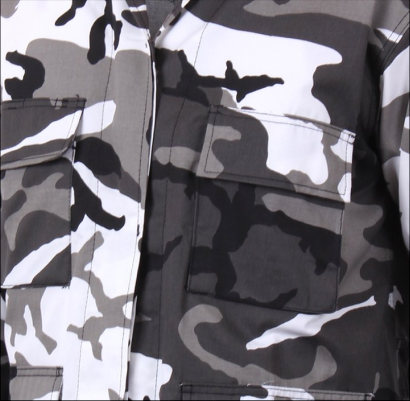
City
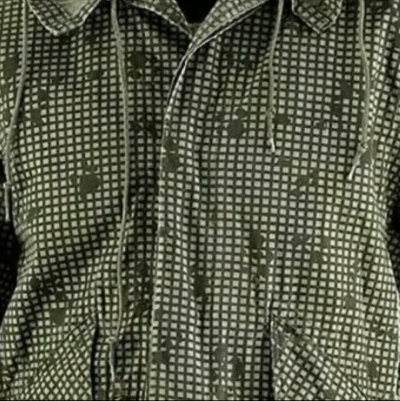
Desert Night
As for "Desert Night," its history and purpose look more attractive. The creation of this option is closely related to the technological development of weapons and military optics. The creators believed that the particular shape pattern would be ideal for the night period, as it was supposed to blur the warrior's silhouette for the enemy who uses the night vision goggle. The emergence of the current night-vision generation made this idea impractical, so the point of producing such a form quickly disappeared. And that was until night vision manufacturers improved NV technology.
The second half of the twentieth century was fast-paced for everyone involved in the military industry. The number of calls during this period, for sure, exceeded the number of calls in the entire previous history of humanity. In the history of creating the perfect camouflage, everything is the same. The dream of the military was to make such a pattern that would be universal for any location and time of day.
Also, don't forget about logistics and delivery. After all, the variety of options that the designers proposed did not only have to be produced. They had to be delivered to the departments, and only after those conclusions should be drawn about the practicality and effectiveness of the result. A lot of effort and money spent did not bring the desired result. Immense costs and objective difficulties accompanied the army on this challenging path to achieving the goal. But, we can confidently say that everything that has been done brought us closer to the ideal option.
By 2004, it became abundantly clear that we were at the point where opportunities and desires intersect. At this point, technology, combined with the painful and rich experience of the twentieth century, created the conditions for the start of massive work on a universal uniform for the most powerful army in the world.
The US Department of Defense has created a simple and understandable term of reference. Universal camouflage should hide a soldier from an observer on any terrain at any time of the day and minimize the possibility of his identification when using night vision devices (and thermal vision) of current generations.

The answer to this request was UCP. A new form that did not have the usual pattern used by armies worldwide throughout history, but a pixel pattern. Tests have shown the high efficiency of this design. The silhouette was blurred on any terrain and hid the soldier from the observer with a night vision device. The results exceeded all expectations in the city, and especially in the mountainous regions - the soldiers remained as invisible as possible.
Strength, ergonomics, and shape reliability are provided by rip-stop technology, which has proven its practicality over the years of use. The uniform was made from a combined material in the ACU cut.
Remember when we mentioned the Navy's selfless efforts to mask ships? It just so happened that the fleet tried to be the first everywhere. When it comes to creating optimal camouflage, the Navy was at the forefront.

Back in 2001, three years before the army, testing of the MARPAT camouflage designed for the Marine Corps began. It was developed based on two of the most successful designs - Desert-3 and M81. Samples were obtained from which they began to sew a form from a diagonal twill. They were digitized, and based on the result received.
The form proved to be excellent in practice. And, in the future, only the materials from which the uniform was sewn were improved, using fire-resistant fabrics. Moreover, "MARPAT" became the basis for the fleet uniform, for which the color palette was shifted towards blue tones without significantly changing the structure of the pattern itself. The modification "AOR 2", in light green colors, was also adopted. The Air Force rip-stop and twill camouflage dubbed "ABU" was based on the "tiger stripe" pattern and the UCP colors. He
Despite significant progress and apparent successes, the army never stops, having achieved a positive result. After all, the best military in the world requires only a perfect result. Today UCP is being written off, and the process of introducing the universal pattern "Multicam" is underway. This procedure began in 2010 and involved changing the pattern and using more advanced blended fabrics that can withstand the effects of combustion.
Today, this particular camouflage variant is a modern answer to the request and an excellent basis for further technology development.
From all of the above, you can get a detailed picture of the formation and development of modern camouflage. We talked about the history of the invention of the contemporary design of the army uniform and examined the fabrics from which they are sewn. But what we missed is the style of the uniform that our soldiers wear with pride. Therefore, now we will tell you about it.
The uniform of the American army has come a long and glorious way, always combining the current trends, tradition, and practicality designed for any possible situation. To date, all these aspects have been preserved and implemented in all branches of the armed forces. We will demonstrate this assertion by looking at the form used by the US Army today.
These are clothes that you definitely won't see often. It is designed for fitness and sports. Even though its form has periodically changed throughout history, it is a comfortable and straightforward black outfit. Our brave boys and girls maintain their shape because the soldier is the primary weapon of their country.

The soldiers are equipped with black shorts with a gold "ARMY" lettering and a black top with short or long sleeves with the same large lettering on the chest for the summer period. For low temperatures, a black tracksuit with identical lettering and gold stripes is used. A black fleece hat complements the shape. This uniform is lightweight, comfortable, and comfortable at any temperature.

Until recently, Army Combat Uniform was used for wearing in the service and in military missions, which is painted in the corresponding Universal Camouflage Pattern colors, suitable for the environment: desert, forest, mountains, and urban conditions, which we have already described earlier.
The Army Service Uniform was introduced in 2014 to replace the Army Green Uniform. This uniform has a long and glorious history dating back to the 19th century. She deserves a separate story and a separate article.
The kit includes a specific jacket with several pockets with flaps and trousers with inner and patch pockets. The jacket is used as an element of clothing and to identify a fighter, even though it does not provide for shoulder straps. The emblem is placed on the collar and practically merges with the primary color of the uniform. This is done so that the soldier's rank is readable only at close range to protect the soldier from the enemy sniper. A chevron is sewn on the correct country, indicating the position, and on the left, a chevron, identifying the type of military or service. In addition, the Connection Emblem is located on the left sleeve, at the top of it.
In addition, the jacket contains the US flag, which has been specially designed always to create the effect of waving in the wind. Personal information is also attached to the chest of the soldier: surname and blood type. Also, infrared inserts are sewn into the fabric of the jacket.
Overall, the shape is comfortable, ergonomic, and durable. It is safe and informative at the same time and ranks among the best examples of armies in the world.
In conclusion, to talk about the everyday clothes of the military, it is worth remembering The Extended Cold Weather Clothing System. These are clothes designed to work in cold and even icy conditions. Like many pieces of equipment for the modern strongest army on the planet, ECWCS developed a long time ago, namely in the 1980s. After improvements, improvements, and development, the technology was adopted as the main one in 2007 and is used to this day.
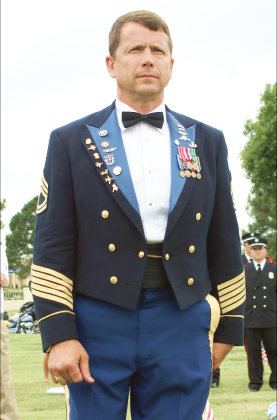
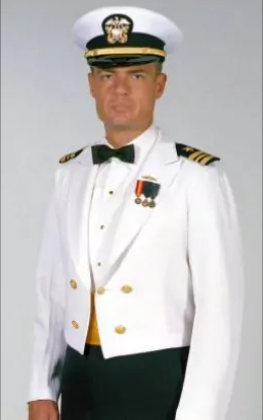
Speaking of the military uniform of the legendary US Army, one cannot fail to mention clothing for special occasions. Navy blue trousers and an almost black jacket with a white waistcoat and shirt, topped with a black bow tie, have long been a symbol of the bravery and glory of the national army. A spectacular suit that combines centuries-old traditions and the incredible history of our troops in its design. And your heart would definitely miss a beat when you see a soldier dressed in an Army Mess Uniform.
The Army White Mess Uniform, which is used on special occasions, is even more impressive. A snow-white jacket and shirt, combined with black pants, a belt, and a tie, look just incredible!
The path that the army industry has traveled throughout its long history is shocking and delightful. It is not only fascinating to dive in and study it, but it also takes a lot of time. But, as you can see, it's worth it. Therefore, we will continue our story about the equipment of the US Army fighter and its history. After all, our future depends on how well we know the past.
But, all this will be tomorrow. Today, let's take a closer look at the details of the current equipment of a modern soldier.
Table of contents